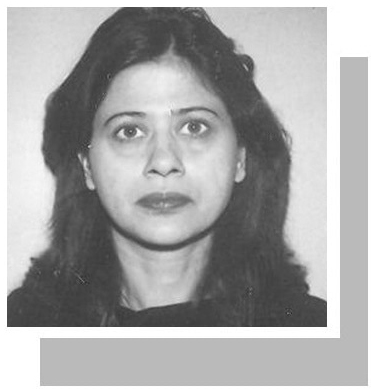Preet Nagar
By Rukhsana Shah
Dawn : August 09, 2017

The writer is a former federal secretary.
IT is difficult to recapture the fervour and idealism of the Muslims of the 1940s when the idea of Pakistan took hold of their collective imagination. Yet it represented a continuum of the eternal quest for an ‘intended’ social order that had begun with Plato’s Republic, although utopias depicting peaceful peasant societies and forms of earthly paradises have existed in many early religions and societies.
The publication of Thomas More’s Utopia in the 16th century and Francis Bacon’s New Atlantis subsequently introduced the genre of utopian literature. But it was the American Revolution that provided a fertile ground for experimenting with alternate social orders such as Brook Farm, Mound Bayou and the Shakers communities. In the 19th century, Robert Owen established his New Lanark cotton mill in Scotland, followed among others, by Van Eeden’s Walden in the Netherlands.
In the 20th century, the socialist revolution and movements for civil and women’s rights, social justice and environmental protection were all manifestations of the search for a better world. Women naturally embraced utopianism as it could provide a counterfoil to the patriarchal system. In 1905, Rokeya Hussain’s Sultana’s Dream described Ladyland, a green idyllic space where women were educated, liberated and innovative. In 1915, Charlotte Gilman’s serialised book Herland appeared, in which gender roles were reversed.
In colonial India, Gandhiji’s vision encompassed a return to Ramraj enriched by the ideas of Tolstoy and Ruskin, and was reflected in his two ashrams set up in Maharashtra. Earlier, Rabindranath Tagore’s father had set up the famous Shantiniketan, a spiritual centre in West Bengal that is now a full-fledged university town. However, not many people know about the existence of Preet Nagar (now in India), a community that was set up midway between Lahore and Amritsar in 1938 by Gurbakhsh Singh, a resident of Model Town, Lahore.
Peace lovers from both sides of the border meet at this haven.
As a young engineer studying in Michigan in the ‘roaring twenties’, Gurbakhsh Singh witnessed extensive social and cultural upheaval, including mass migrations of black Americans to the cities, the rise of radio, cinema, automobiles and household gadgets, and women being granted the right to vote. Concurrently, there was dystopian conflict and disarray reflected in the rise of the Ku Klux Klan, unbridled pragmaticism, disillusionment and intellectual alienation.
On his return from America, Gurbakhsh worked for British Railways, but resigned and started a monthly Punjabi journal Preetlari in 1933. In one of its first issues, he wrote about his vision of creating an innovative utopian community. During those years, India was also undergoing political and social resurgence. The success of socialism in the Soviet Union had inspired many Indians to challenge not only imperialism but also their own traditional social systems. The Progressive Writers Movement — standing for all that was against the status quo — was founded in 1936, and many people responded to Gurbakhsh’s call with financial support. Thus in 1938, Preet Nagar — Village of Love — came into being.
Preet Nagar was a township designed as a retreat for artists, writers and actors who would visit it from time to time, without discrimination of religion, caste, class and gender: men and women would take turns to cook in a common kitchen — later inspiring a famous play Saanjha Chulha — compose music, discuss literature, rehearse and perform plays. Some of the early residents included Amrita Pritam, Sahir Ludhianvi, Balraj Sahni, Mohan Singh, Sobha Singh and Nanak Singh. An innovative, inclusive and co-educational school for children was set up in 1940.
But Partition badly hurt Preet Nagar’s raison d’être; the Naxalite insurgency further disoriented its idealism and the two Pakistan-India wars battered its utopian harmony. The blissful years of the 1940s and 1950s could not be recaptured although Preetlari continues to be published regularly. The family went through personal tragedies. Gurbakhsh Singh’s death in 1977 was followed by that of his son Navtej in 1982 and his grandson Sumeet, who was gunned down by Sikh extremists in 1984.
In 1990, the fourth generation of Gurbakhsh Singh’s children formed a trust to rejuvenate the values and dreams of a bygone generation. This resilient family slowly restored not only the old houses and activities of storytelling, writing, poetry, music and theatre, but also revived Preet Nagar’s unique principles of community service, education and innovation. Peace lovers from both sides of the border have continued to meet at this haven since 2009, despite the antagonistic stance of their respective governments.
It is a pity that we lost our own utopian ideals so soon after Pakistan was created — Woh intezaar tha jiska, yeh woh seher to nahin. While the Comilla and Orangi Pilot Projects represented our closest experience to communities seeking social change, and other small islands of hope notwithstanding, we continue to struggle today with the dissonance of our arid political and social times.